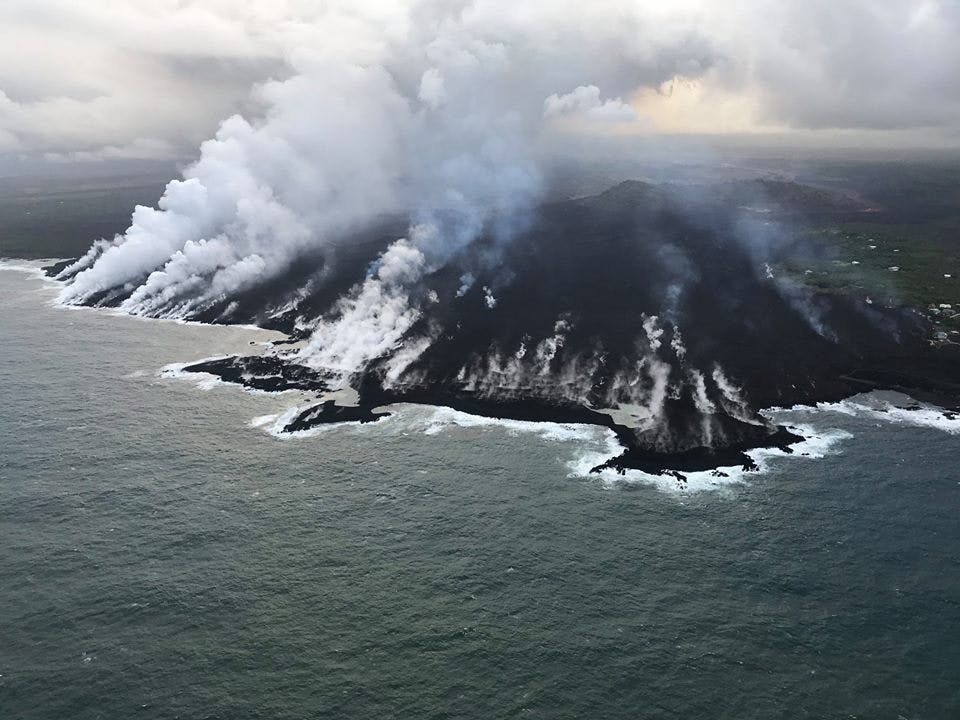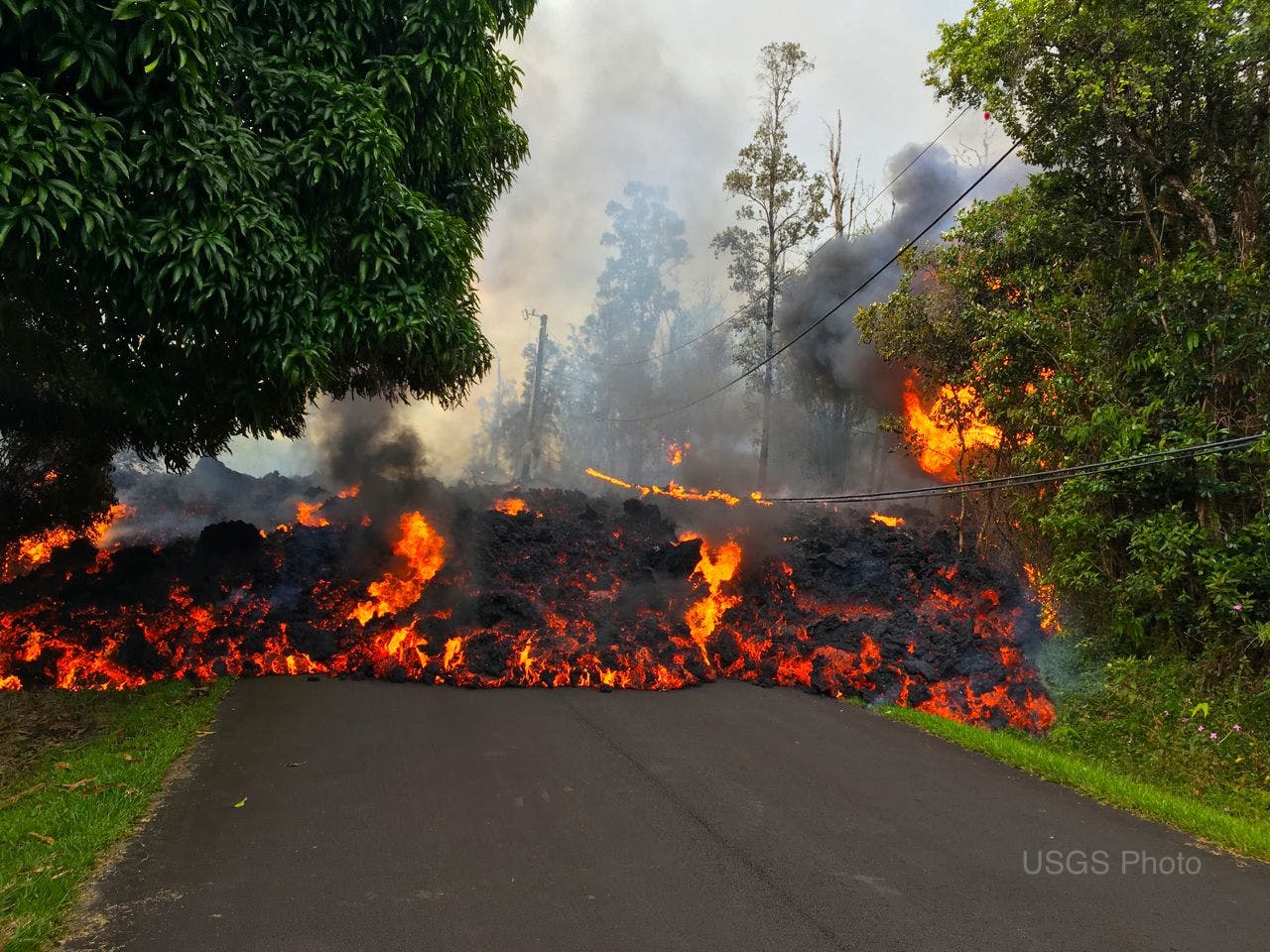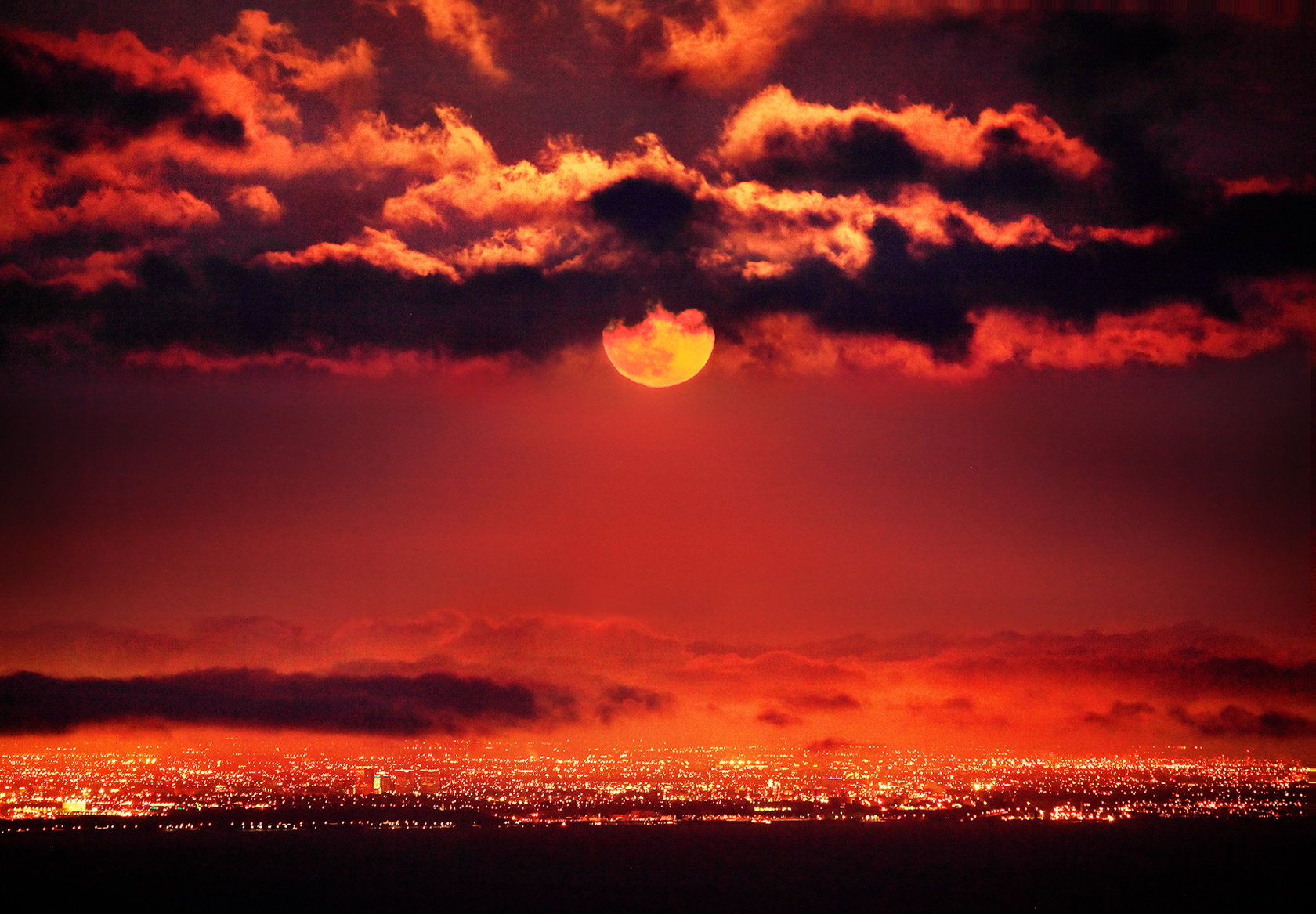As the Kilauea Volcano continues to erupt, the Hawaiian Volcano Observatory and the United States Geological Survey have a message for people in the area: Don’t swim in the ocean near the volcano.
An eruption in the lower East Rift Zone (LERZ) continued Tuesday, as the Fissure 8 fountains spatter cone kept supplying lava to an open channel with small, limited overflows, the USGS reported Tuesday. “Lava is entering the sea this morning on the southern portion of the flow front,” an HVO status report stated Tuesday, and going near the ocean where the lava is flowing is particularly dangerous for a lot of reasons.

The HVO report specifically noted that the ocean entry zone “is a hazardous area,” and not just because it’s a bad idea to swim anywhere near where a volcano is erupting. Getting too close to an ocean entry on land or via the ocean “exposes you to flying debris from sudden explosive interaction between lava and water,” the report noted.
The land around where lava is entering the ocean through this channel is not particularly safe, or even stable yet. The lava delta is unstable, the HVO reported, because it’s on “unconsolidated lava fragments and sand.” This “land,” which is really just loose material, can be eroded away by surf, and the area could become unsupported and slide off into the sea.
Basically, you shouldn’t go near this ocean entry zone, even if you’re not headed into the ocean itself, because there’s a chance the “land” you’re exploring could wipe out into the ocean, and you’ll only have yourself to blame if you’re washed away with it.

Additionally, when the lava meets the ocean and “interacts” with it, the combination creates “laze,” also known as a seawater plume full of hydrochloric acid and fine volcanic particles. These bits of acid and particles can irritate your skin, eyes, and lungs, so that’s yet another reason to stay away from Kilauea’s lava ocean entry point.
Kilauea and its lava have been doing all sorts of weird stuff lately. Lava ballshave been spotted on the Big Island, and the steam rising off the ocean where the lava meets it can contain tiny shards of volcanic glass.
With the HVO and the USGS also urging people to stay away from this ocean entry point because it’s “hazardous,” these volcano-related phenomena should be enough to land it on your “steer clear” list.
This year’s Strawberry Moon, which marks the short harvesting season for strawberries, offers an exciting event for celestial sightseers. But this year, Saturn’s opposition will be visible at the same time as an already gorgeous June full moon.
Stargazers on the East Coast can look up at 12:53 a.m. Eastern to catch the best glimpse of the moon and Saturn, which will be at its closest and brightest position of the summer. But if you aren’t in the Eastern time zone, have no fear. Inverse has rounded up peak viewing times for the Strawberry Moon and Saturn.
- CDT (Central Daylight Time): 11:53 p.m. (June 27)
- CST (Central Standard Time): 10:53 p.m. (June 27)
- EDT (Eastern Daylight Time): 12:53 a.m. (June 28)
- HDT (Hawaii-Aleutian Daylight Time): 7:53 p.m. (June 27)
- HST (Hawaii Standard Time): 6:53 p.m. (June 27)
Even though the moon isn’t a bright strawberry red, it will be the most colorful it gets all year. The moon’s arc is shallow, meaning Earth’s atmosphere filters out all the colors on its spectrum except red and green. That means the moon will look more reddish as it rises and sets, but in the middle of the night will take on a more yellow, honey-colored hue.

“It’s the most colorful of all full moons,” Daniel M. Soref, Milwaukee Public Museum’s Theater & Planetarium director, told the Milwaukee Journal Sentinel in an interview published Monday. “We always get more color in the sky when things are lower.”
One thing to note is that the moon will also appear as a minimoon, which is difficult to notice with the naked eye but means the moon is at the furthest possible position from Earth. The minimoon will happen next month at the same time, as well, if you can’t get enough of that ever-so-slightly tinier moon.
The Strawberry Moon has different nicknames in different cultures, including the Rose Moon, the Green Corn Moon, the Planting Moon, and the Birth Moon. So wherever you happen to be, don’t miss it!
end quote from:
No comments:
Post a Comment